Get all of your questions about baking with coconut flour answered here! This instructional article takes the guesswork out of working with this unique ingredient, so you can make delicious keto treats any time.
Be sure to check out all of my keto coconut flour recipes!
Coconut flour is a popular keto ingredient that is now widely available at more grocery stores. It’s incredibly useful and makes some of the best low carb, grain free baked goods. In fact, my favorite keto chocolate cupcakes are made entirely with coconut flour.
But if you don’t know how to work with it, coconut flour can be difficult and sometimes very frustrating. It simply doesn’t behave like any other flour on the market, and many people make mistakes when working with it. And then they give up altogether.
I want nothing more for you to have success in keto baking, which is why I put together this primer on baking with coconut flour. Because knowledge is power, my friends!
So let’s start at the very beginning, shall we?
Jump to:
- What is coconut flour?
- Benefits of coconut flour
- Replacing wheat flour with coconut flour
- Replacing almond or other nut flours
- Does coconut flour really need all those eggs?
- Does it taste like coconut?
- Different brands of coconut flour
- What is the best use of coconut flour?
- Coconut Flour Blends
- Where to purchase coconut flour
- How to store coconut flour
- Conclusion
- Coconut Flour Recipes
What is coconut flour?
Coconut flour is actually the by-product of coconut milk production. After they extract the coconut milk, the leftover coconut meat is dried at low temperature for a long period of time, and then finely ground.
The result is a fine, powdery substance that resembles wheat flour in appearance, but smells distinctly of coconut.
The most distinctive characteristic of coconut flour is the rather astonishing way that it soaks up moisture and liquids. In this it differs from all other flours, gluten-free or otherwise. It’s like a sponge in powder form, taking in a remarkable amount of eggs, oil and other wet ingredients, and still staying as thick as porridge until it finally reaches saturation.
On the other hand, if you add too much liquid, you end up with a soggy baked good that won’t cook through. It’s a fine balance.
Don’t panic! Baking with coconut flour isn’t quite as unforgiving as it sounds. It does take some getting used to, however. I recommend starting with tried and true recipes until you have a feel for it.
Benefits of coconut flour
Coconut flour is something of a nutritional powerhouse. Compared to wheat flour and nut flours, it is:
- High in fiber
- Low in carbohydrates
- Low in calories
- Completely gluten free and grain free
- Low in fat (compared to other keto flours)
- Low in omega 6
- Contains lauric acid, which may help fight infection
- Contains potassium
Additionally, coconut flour is quite inexpensive. This is particularly true since you use quite a bit less of it for baking than any other flour. A 16 ounce bag of coconut flour costs about $4 and can make 5 to 6 different recipes!
Replacing wheat flour with coconut flour
There really is no perfect formula for subbing coconut flour for wheat flour since it depends on what you are trying to make. Cakes and muffins, which need to be light and fluffy, will be very different than something more dense, like cookies.
But when working with coconut flour, you always need to decrease the flour and increase the eggs and baking powder.
For example, conventional pumpkin bread takes 2 cups of wheat flour, 2 eggs, ½ cup butter or oil, and 1 ½ teaspoons of baking powder.
My keto pumpkin bread takes ¾ cup of coconut flour, 4 eggs, 2 egg whites, ⅓ cup of butter or oil, and 2 full teaspoons of baking powder. Plus I always add some protein powder to help coconut flour recipes rise and hold their shape better.
Replacing almond or other nut flours
Again, there’s no easy formula here as it depends heavily on what you want to make. But this is a little easier since they are both keto and gluten-free to start with.
If I rework one of my own almond flour recipes, I do something like this:
- ⅓ cup of coconut flour to every cup of almond flour
- Triple the amount of eggs
- Baking powder remains the same
- Protein powder remains the same
- Oils and liquids are about the same
From there, I adjust accordingly. If my batter seems to thick, I add additional liquid, one tablespoon at a time. If my batter is too thin, I add more coconut flour, one tablespoon at a time.
The reality is that experience and gut instinct helps a great deal. Knowing what the batter should look like comes with time so again, I recommend finding tried and true coconut flour recipes to start with.
Does coconut flour really need all those eggs?
Yes, yes it does. Don’t try to skimp on them or you risk recipe failure!
When I first started baking with coconut flour, I was shocked to learn that many recipes require 6 to 12 eggs. But trust me, those eggs are vital for giving your baked goods proper body and structure. Every time I’ve tried to cut back on the eggs, I’ve regretted it.
Coconut flour is remarkably absorbent and will soak them all up, and then some. The results aren’t eggy or rubbery. In fact, they often look and taste just like conventional baked goods.
Sadly, I have not had any luck with egg replacers at this point. They simply don’t give coconut flour enough structure.
Does it taste like coconut?
Coconut flour definitely has a strong flavor and some baked goods can taste very coconutty, if there are no other flavors to compete with it.
But if you dislike coconut, all is not lost!
I find that chocolate, cocoa powder, and coffee can help mask the coconut taste for cakes and muffins. Other extracts and flavors, like citrus, can help too.
For savory recipes, a little garlic powder helps mask the coconut flavor. And if you make fathead dough with coconut flour, the cheese overpowers it completely. Many readers say that they can’t taste it all in my Chewy Keto Bagels!
Alternatively, if you do like the taste of coconut, you can bring it to the forefront with coconut oil and some coconut extract.
Different brands of coconut flour
One of the issues when baking with coconut flour is that different brands vary in consistency and absorbency. And of course this has an impact on your baked goods.
I have two brands I use and like: Bob’s Red Mill and King Arthur Baking. These are two of the most reliable baking companies in the US and I turn to them for many ingredients.
But I find that they do differ from each other. King Arthur coconut flour is lighter in color, tends to clump a bit, and seems to require less liquid than Bob’s (i.e. less absorbent). It’s not hard to accommodate these differences, though. I sift the King Arthur flour, whereas I don’t need to with Bob’s. And I hold off on extra liquid until I see what the batter looks like.
Always be sure to read the recipe carefully and look for the visual and tactile cues. I try to specify what the batter should be like in every recipe so that readers can adjust accordingly.
What is the best use of coconut flour?
Coconut flour is wonderful but it’s not perfect, and it doesn’t work for every recipe. In my experience, it’s best suited to some baked goods and not to others.
I think it really shines in keto cakes and muffins, because it gives them a light, fluffy consistency. It’s also good in recipes that are meant to be more dense, like coconut flour brownies.
But in recipes where you want a crisper texture, like cookies and keto shortbread, it fails miserably. Because it requires eggs to hold together properly, cookies end up too soft and moist.
If you are new to working with it, my coconut flour pancakes are a great place to start. It will give you a sense of how coconut flour works, and the batter can easily be adjusted as you go.
But I don’t think it works well in baked goods that require a crisp texture, like cookies.
Coconut Flour Blends
You can also blend coconut flour with other keto flours – it doesn’t need to be an all or nothing proposition.
Some of my most popular cakes are made with a combination of almond and coconut flour, as I find it improves consistency. The dryness of the coconut flour offsets the moisture and fat in the almond flour. It can also help lower the carb and calorie count.
For a recipe such as my Keto Texas Sheet Cake, I use 2 cups of almond flour and ⅓ cup of coconut flour. This ratio works well and gives the cake a finer crumb.
I also like to combine the two flours in keto scones, to give them right dense, slightly crumbly texture. And keto breads, such as my famous keto focaccia bread, benefit from a flour blend as well.
Where to purchase coconut flour
Keto and grain free diets have exploded in popularity in the past few years, and coconut flour is available in most grocery stores. It’s usually carried in the gluten-free or natural foods aisle, but sometimes it’s in the baking section.
You can also easily purchase coconut flour from online sources such as Amazon.
How to store coconut flour
Because coconut flour is so absorbent, it’s important to keep any open bags wrapped up tightly. This is particularly true if you live in a humid environment.
I prefer to keep it at room temperature, rather than in the fridge or freezer. Since it has a low fat content, it won’t go rancid or spoil easily, and it’s harder to work with when it’s cold. I only recommend freezing it if you have purchased in bulk and won’t go through it within 6 months.
The new Bob’s Red Mill bags have a great velcro-like seal at the top so I simply keep my coconut flour in the bag, tightly sealed.
Conclusion
I hope that helps to answer some of your most basic questions about baking with coconut flour. It may seem daunting at first, but after working with it, I think you will find that it’s not as tricky or as unforgiving as it sounds.
Coconut flour is definitely an ingredient worth adding to your repertoire. If you have a question you don’t see answered here, don’t hesitate to let me know!


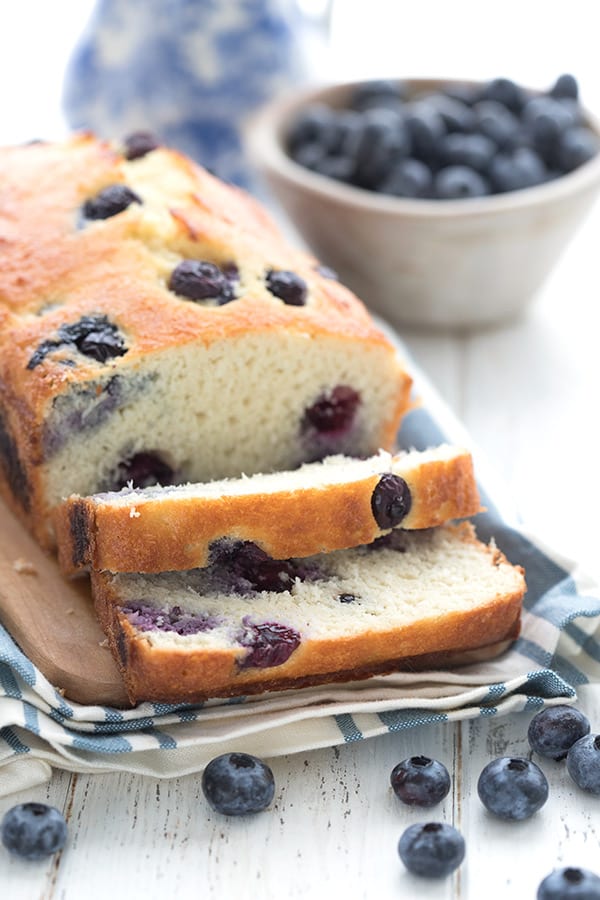
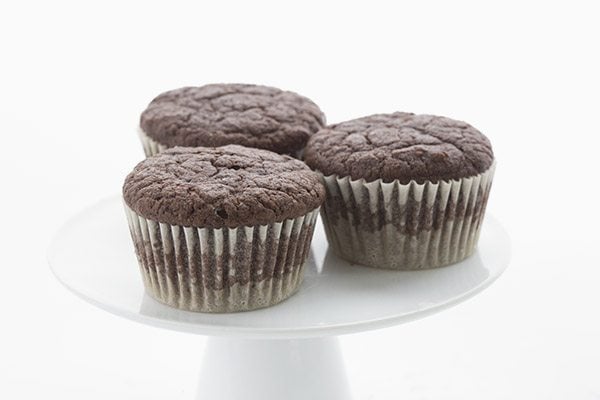

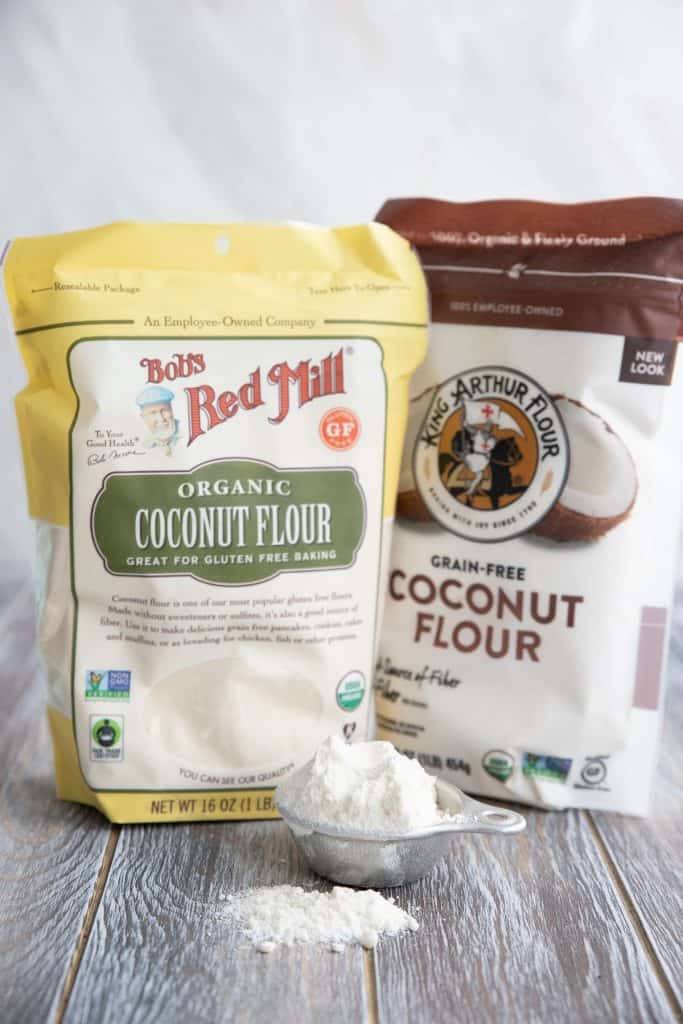

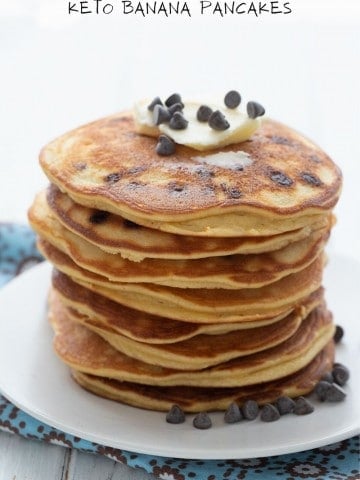
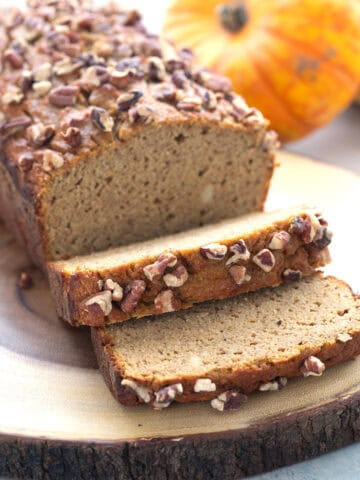


Meghan says
To bread and fry with coconut flour, it is easier if you mix an egg with almond milk or other milk. I don’t have exact measurements. Then, just dip your meat in the liquid mixture and then roll gently in the coconut flour. It doesn’t seem to clump up on me when I do that.
Shaun says
I’ve cooked/baked with soy flour before and it sounds like coconut flour may be similar (in that they both need exorbitant amounts of liquid in the recipes). Have you worked with soy flour, and would you say they’re comparable? I’m just trying to get an idea before I dive into the coconut flour world…
Carolyn says
I have used soy flour a bit before but it’s not the same as coconut. Coconut flour requires a lot of eggs to give it structure…too much liquid and it will be soggy. So it’s a balance with eggs and liquids.
Cari says
Hi –
I make apple-egg streusel muffins with coconut flour and they always turn out hollow inside. Any suggestions on how to prevent this?
Thanks!
Carolyn says
I’d have to know the rest of the recipe.
Anna says
Thanks for a very useful post – I bought a few kilos of coconut flour at my wholefoods store and most of my previous attempts at baking with it had been a bit frustrating. Good to know I need to massively bump up the egg quota – I wonder whether a chia gel would work here too, to keep the number of eggs down. I did make an excellent chocolate cake where I pretty much just subbed plain flour for coconut, and somehow that one just worked perfectly!
Kathy says
I just wanted to jump in here with a trick I found when baking with coconut flour. When using the many eggs required, I separate them and mix the yolks in with the other wet ingredients and the flour. I add small amounts of hot water to the mix until the batter has the consistency I’m looking for (doesn’t take much). Then I whip the egg whites and fold them in. The whipped whites give the bread a lightness that is often missing from gluten-free baked goods. I have a recipe for coconut flour lemon sponge cake that works a treat!
By the way, if I’m using cocoa, I use small amounts of hot coffee rather than water.
Alisa says
Hey Carolyn – I was looking at your drop biscuit recipe (going on the menu tonight!) and saw a comment from another reader about Coconut Secret brand, which is what I’ve always used. Do you have a brand that you stick to for better results? Thanks much!
Carolyn says
I almost always use Bob’s Red Mill. But you can adjust for any brand. If you find your biscuit dough too wet, quickly whisk in another tbsp or so of coconut flour. If it’s too thick, add a tbsp or two more liquid. The dough should be thickish and sticky, but not impossible to drop from a spoon. Does that help?
Alisa says
Sure does, thanks! And this biscuit is pretty darn tasty – thanks for the great recipe!
Aubrey B says
Hello,
I am wondering about using gelatin as an egg replacement in coconut flour recipes. I am trying to figure out if this would be suitable. I don’t like using so many eggs all at once! What do you think? yea or nea? Thank you!!
Sam says
Funny! My favorite way to use coconut flour is breading chicken and fish! I’ve never had a problem with it. My boyfriend loves it :D.
Janet Hoover says
Has anyone had any luck replacing eggs in using coconut flour? I would love to find a recipe for low carb pancakes that are gluten, and egg free. I tried making almond flour pancakes using flaxseed/water to replace eggs but was a disaster. Thought maybe coconut flour would work better?
Earl says
So glad to find your post. I,ve been using C flour in a pound cake recipe made with almond flour that I,ve had a pretty good results with. I just sub one for one on the flour and add water at the end to get the ‘pouring consisity’ that I need to get it out of the mixing bowl and into the glass pie pan I use to bake it in. It is a bit more dense then the almond flour pound cake but I love the taste and it’s not grainy like some other recipes I,ve tried. This recipe calls for 6 1/2 oz of flour and only 5 eggs. Since I,m not a cook, just a recipe follower would you recommend changing the ratio of eggs to flour. Or adding some other liquid to even out the thickest of the batter.
Carolyn says
Hi…I am not sure I follow you here. You’ve taken an almond flour pound cake recipe and used coconut flour instead at a one-to-one ratio?
Patti Pierce says
Dear Carolyn,
Is it possible to use some coconut flour in a regular white bread recipe? Going to try to start using coconut flour in some of my recipes. So coconut flour makes GF baked products drier and denser?
Thanks for such a great, informative post.
Patti
Carolyn says
Hi Patti,
Coconut flour is funny stuff. It attracts and absorbs moisture, so it doesn’t make things drier per se, but it can make them denser. I am sure you could use it in white bread, but I wouldn’t use too much at first. Try 1/2 cup at most.
KLO says
So any luck with cookies and coconut flour? I’ve tried, but they run to the edge of the baking sheet. I end up putting them in a 9 x 9 and making bar cookies. Any help? thanks
Carolyn says
Oooh, bar cookies is a great idea. I’ve had no luck with really good cookies with coconut flour, I find it too dense. Cakes, it’s great!
Virginia Finlay says
I have just begun to try different flours and gluten free options. I bake for friends and wanted to try a cake with coconut flour. I had read that it is a better option than almond flour. This cake will be my first attempt. Thanks for the info”.
looseal says
I’ve been looking for a post that explains the difference between coconut flour and nut flour. And the way each work in cooking.
Thanks
Sherrie says
I have got coconut flour sitting in my pantry waiting for me to hurry up an start practicing with it, thank you for this post, it will come so handy!!!
Shaina says
I have two huge bags of coconut flour that I keep putting off using because I hate to waste it with experimenting. Thanks for this!
Catherine H. says
I made this cake for my daughter’s first birthday today (I kept the nuts out of her piece). It turned out beautifully, although you’re right that only the hazelnut cream really had any hazelnut flavor. Mice had gotten into my coconut flour, so I substituted oat flour for what I lacked and used only 7 eggs. Since I maintained the 3/4 cup milk (probably too much liquid for a non-coconut flour batter), I was a little worried that the drippy batter would be a problem, but it baked up just fine. Next time I may add more cocoa powder for extra chocolate flavor. The hazelnut cream is the best part of this cake, and inspired my best batch of nutella ever.
Jean B. says
A belated thanks for this terrific information, Carolyn. I have been too intimidated to try baking with coconut flour. It seems so tricky. Now I feel as armed as I ever will be before I strike out into this territory. (BTW, I am always referring to you as “the low-carb baking guru”….
Carolyn says
It can be tricky but you have to try it a few times and then you feel more comfortable with it! Thanks, Jean.
Gage says
Hi Carolyn, I am so glad that found your article – it is excellent. I wondered if you could share some thoughts- This evening I made the cheese biscuits using coconut flour for the first time. I used the following ingredients: ¼c coconut oil, 1/3c coconut flour, 1/8c almond flour, 4 eggs, 1/4 tsp each – sicilian spices, salt, onion power, and baking powder and 1/2c cheddar cheese. Everything blended nicely, the biscuits were the perfect texture, and they tasted surprisingly yummy.. except… the overwhelming flavor of coconut! Might you have any suggestions for modifications to this recipe? Any feedback would be much appreciated!
Thanks! Gage
Carolyn says
Hi there. I am going to guess that the additional flavour of coconut was not from the coconut flour but from the coconut oil. I’ve always used butter when I made those biscuits. The recipe I had was from eHow, but I can no longer seem to find it (usually now I just wing it on my own). I really didn’t find that they tasted like coconut at all. I’d say try a different oil and up the onion powder to 1/2 tsp.
Gage says
Thanks so much Carolyn! I truly appreciate your taking the time to respond. I figured it was the oil. Butter it will be! Gage
Lady Jennie says
Thank you for the work that went into this. It is very useful. And I want to try that chocolate cupcake recipe!